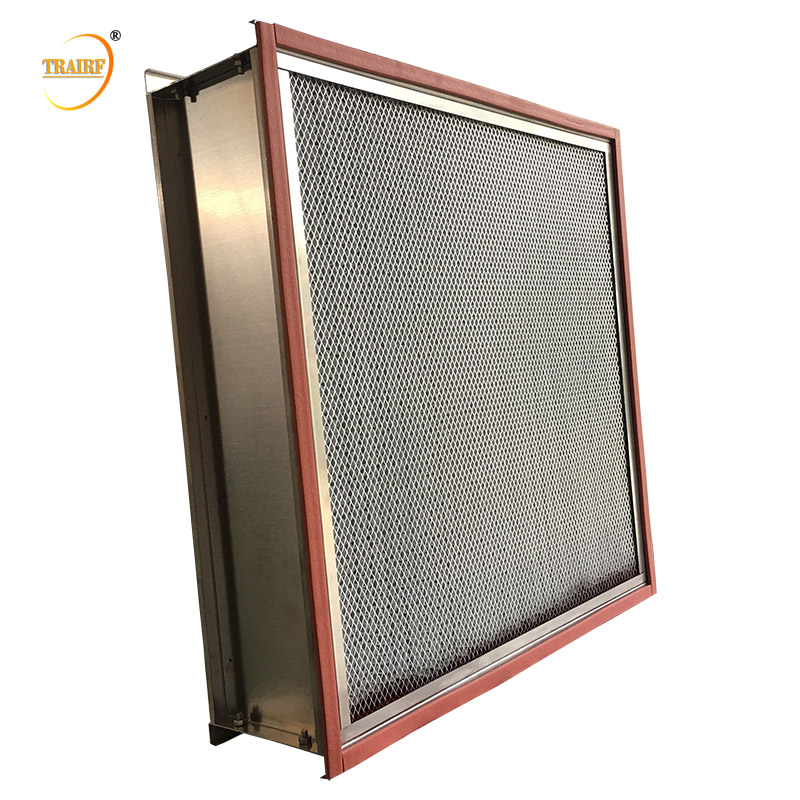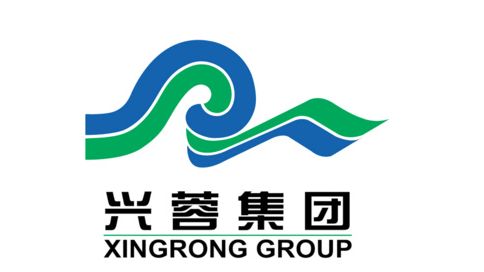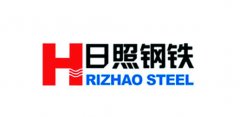 Air Filter Knowledge Summary
Air Filter Knowledge Summary
 Warmly Congratulate Our Company Xi 'an Branch - Xi 'an Ruichuan Purification Equipment Co., Ltd. was officially Established!!
Warmly Congratulate Our Company Xi 'an Branch - Xi 'an Ruichuan Purification Equipment Co., Ltd. was officially Established!!
 Air filter filter speed and surface wind speed calculation formula
Air filter filter speed and surface wind speed calculation formula
 How to improve the sealing effect of high temperature filter
How to improve the sealing effect of high temperature filter
 Air Filter Clean Methods & Steps
Air Filter Clean Methods & Steps





























1. Main parameters of air filter
1.1 Filter size of purification air conditioning ventilation system
(1) The most commonly used filter in air conditioning and ventilation system; Whether frame, bag or W, the nominal size is usually 610mm X 610mm, which is actually 24 "X 24" specifications in developed countries. The corresponding outer frame size varies from 592mm to 597mm depending on the manufacturer's side.
(2) The hePA filter used at the end of the purification system is mainly 610mm (24 ") in developed countries, and its derived sizes are 203mm, 305mm, 762mm, 915mm, 1219mm, 1524mm, 1829mm (8 ", 12 ", 30 ", 36 ", 48 ", 60 ", 72 ").
The commonly used domestic hePA filter size is basically the same as that of foreign countries, the common size of hePA filter with partition is 484mm X 484mm X 220mm (GB-01) and 630mmX 630mmX 220mm (GB-03), GB here has nothing to do with the "national standard", where G stands for filter and B stands for glass fiber.
1.2 Rated air volume of the filter
The rated air volume of the filter is the maximum air volume that the filter can pass. It depends on the area of the filter material (not the area of the filter, the area of the filter material is often dozens of times the windward area of the filter), such as the airflow speed of the filter material is the same, the area of the filter material is large, and the air volume is also large. At present, the rated air volume of the same structure filter depends on the size of the filter.
The same structure, the same filter material filter, when the final resistance is determined, the filter area increases by 50%, the service life of the filter will be extended by 70% to 80%, when the filter area is doubled, the service life of the filter will be about three times the original.
1.3 Initial resistance and final resistance of the filter
(1) Filter resistance to air flow, filter ash increases with the use of time, when the resistance of the filter increases to a specified value, the filter is scrapped.
The resistance of the new filter is called "initial resistance", and the resistance value when the corresponding filter is scrapped is called "final resistance". There are "final resistance" parameters on the samples of some filters. Air conditioning engineers can also change the final resistance value of the original design of the product according to the site situation. In most cases, the final resistance of the field filter is 2-4 times the initial resistance.
The table below gives the recommended final resistance values for various filtration efficiency specifications.
Recommended value of final resistance
Filtration efficiency Specification (%) Recommended final resistance (Pa)
G3 100-200
G4 150 - 250
F5-f6 (medium effect) 250-300
F7-f8 (Senior high school) 300-400
F9-h11 (sub-efficient) 400-450
⑷ low efficiency filter often use diameter ≥10μm coarse fiber filter material, due to the fiber gap, too much resistance is likely to filter dust blown down, at this time, resistance is no longer increased, but the filtration efficiency is zero. Therefore, strictly limit the stopping resistance values for filters below G4.
In order to ensure the effective use of all levels of filters, each filter section is recommended to install resistance monitoring devices, the cheapest resistance monitoring device is u-tube differential pressure meter. The inclined tube differential pressure gauge is more accurate than the U tube differential pressure gauge, and its appearance is more beautiful. Pointer differential pressure meter grade and price are higher.
The automatic control system of differential pressure control generally adopts differential pressure transmitter, differential pressure transmitter can be resistance into current or voltage signal transmission to the control system, such as with differential pressure switch, you can compose the final resistance alarm device.
1.4 Filtration Efficiency
The "filter efficiency" of the air filter refers to the ratio of the amount of dust captured by the filter and the dust content of the original air:
The determination of filter efficiency is inseparable from the test method. The efficiency value is not the same when the same filter is tested by different test methods. Therefore, without the test method, filtration efficiency is out of the question.
(3) The test methods used vary from efficiency to efficiency, from country to country, and from manufacturer to manufacturer. If you must know specific efficiency data, don't forget to specify specific test methods and methods for calculating efficiency.
1.5 let the amount of dust
The dust capacity of the filter refers to the weight of the dust in the filter under specific test conditions. Here specific means:
A. Standard test wind tunnel, and related test and measurement equipment;
B. Standard "road dust" that is much larger than actual atmospheric dust particles *;
* The test Dust prescribed by European and American standards is commonly known as ASHRAE Dust, whose composition is AC fine ash mixed with a specified proportion of fine carbon black and short fiber. The so-called AC fine ash is the Arizona Road Dust in a specific place in the Desert region of the United States. Japan used its own "guandong clay" and China used dust from the Loess Plateau.
C. Test method and calculation method agreed between the client and the test party or stipulated in the standard;
D. Termination conditions agreed upon by the client and the Test party.
The dust capacity is not the weight of atmospheric dust when the filter is scrapped.
(3) There is no direct correspondence between the dust capacity and the weight of the dust that the filter actually contains, and the isolated dust capacity data is of no significance to the user. The service life of the filter can be compared only when the test conditions and test dust are the same.
(4) When doing the dust capacity measurement, destructive dust test should be carried out on the filter.
2. Filter classification
2.1 China's efficiency classification
(1) There are two national standards for general ventilation filters, and the two standards are graded according to the counting method of new filters.
⑵ Gb12218-89 standard is divided into five levels, the specific requirements are shown in the following table;
⑶ GB/T14295-93 standard is divided into four levels, specific requirements see the following table;
(4) The main differences between Chinese standard counting method and foreign counting method are as follows;
A. Only the efficiency of the new filter is measured in China, while the efficiency of the filter in the whole process of dust emission test is measured abroad;
B. Domestic measurement of the filtration efficiency of all particles larger than a certain particle size, and foreign measurement of the efficiency of particles in a certain particle size segment;
C. Standard dust is used in foreign counting and measurement, while atmospheric dust is used in China.
⑸ The national standard of hePA filter classification GB13354-92 stipulates:
A. According to the sodium flame test stipulated in GB6165, the filter whose efficiency is greater than or equal to 99.9% is called hePA filter.
B. For particles with particle size ≥0.1μm, the filter efficiency ≥99.999% is called ultra-high efficiency filter (also known as "very high efficiency" filter).
2.2 European Efficiency Rating
(1) The current European filter efficiency rating is shown in the following table:
* when the final resistance is 450Pa, the average counting efficiency at 0.4μm is equivalent to the colorimetric efficiency.
Since it is a dust test, the average counting efficiency value is higher than the initial efficiency measured by the current Chinese method.
The new European standardization association standard for counting will replace the colorimetric method specified in EN779.
2.3 Comparison of filter efficiency specifications
In order to facilitate the comparison of several efficiency specifications may face, China's research filter expert Dr CAI Jie specially designed an efficiency comparison chart, Dr CAI statement; The comparison chart is for reference only and should refer to the definitions of various test methods and efficiency requirements if accuracy is desired.
3. Filter efficiency test method
3.1 Weight method Arrestance
(1) Weight method is generally used to measure the low efficiency filter as pre-filtration in the central air conditioning system.
The filter is installed in the standard test wind tunnel, the wind end of continuous dust, every other period of time, measure the weight of dust through the filter (or the dust collection on the filter), so as to get the filter in this stage according to the weight of the filter filter efficiency. The final weighting efficiency is the weighted average of the efficiency in each test stage according to the amount of dust generated.
(3) The dust source used in the test is standard dust with large particle size and high concentration. The dust used in various countries is not the same.
(4) The termination test conditions of the weight method test are: the final resistance value agreed with the user, or the final resistance value specified by the test, the final resistance value is different, the weight efficiency is different.
The weighing test is destructive test and can not be used as performance test in production.
⑹ Relevant standards of weight test:
American standard: ANSI/ASHRAE 52.1-1992
British standard: EN 779-1993
Chinese standard: GB 12218-1989
3.2 Colorimetric dust-spot
The colorimetric method is used to measure the general ventilation filter with high efficiency, and most of the filters in the central air conditioning system belong to this filter.
The test bench and test dust and weight method are the same.
(3) the sampling head equipped with efficient filter in the filter before and after sampling, each over a period of dust test and measurement is not filter dust condition before and after sampling point sampling head high efficiency filter paper of light, by comparing the difference of filter paper through light, the so-called "filtration efficiency" by calculated, the final color is each test stage efficiency according to the weighted average amount of dust.
(4) Termination test conditions and weight method similar: and the user agreed to the final resistance value, or the test of their own final resistance value, the final resistance value is different, colorimetric efficiency is different.
The colorimetric test is destructive test and can not be used as performance test in production.
⑹ Relevant standards of weight test:
American standard: ANSI/ASHRAE 52.1-1992
British standard: EN 779-1993
Colorimetry has never been used in China and there is no colorimetry test stand in China.
The colorimetric method was once a popular test method abroad, which is gradually being replaced by the counting method.
3.3 Atmospheric dust counting method
(1) The efficiency classification of general ventilation filters in China is based on the atmospheric dust counting method. The counting method standard in China is earlier than that in Europe and The United States, but it is based on the domestic counter and corresponding measurement level in the 1980s, so the method is relatively rough.
The dust source is "atmospheric dust" in the atmosphere.
⑶ The instrument for measuring the number of dust particles is ordinary optical or laser particle counter.
(4) The efficiency value of the atmospheric dust counting method only represents the initial efficiency of the new filter.
⑸ Care: GB 12218-1989.
3.4 Particle Efficiency
(1) The high concentration test dust used for the test bench and dust generation is similar to that used for the weight measurement and colorimetry.
The "quantity" of dust is the number of particles in the small particle size segment, and the instrument for measuring the number of dust particles is the laser particle counter.
(3) In the process of the test, before and after each dust test, count measurement, and calculate the filtration efficiency of various particle sizes. When the conditions for termination of the test are reached, the test is stopped. The typical efficiency value of the filter is the weighted average value of the instantaneous efficiency at each stage according to the amount of dust generated within the specified size range.
(4) Counting efficiency is no longer a single data, but a filtration efficiency curve along different particle sizes. Experiments in Europe show that when the final resistance is 450Pa, the counting efficiency at 0.4μm is close to that of the traditional colorimetric method.
(5) The European standard specifies the use of specific polydisperse droplets for counting measurements, e.g. Laskin nozzle blown spray from DENS, or Latex balls. *
* Polystyrene Latex balls (Latex) are often used as standard particles for calibrating particle counters.
⑹ The American standard stipulates that bleaching powder is used for counting measurements. The final resistance of the test is also different because of the different efficiency grades.
The complete counting efficiency test is a destructive test and cannot be used for the daily inspection of the product. The manufacturer can save the dust process and only measure the initial counting efficiency of the filter.
⑻ Relevant standards of counting test:
Us standard: ASHRAE 52.2-1999 European standard: PREN 779(draft CEN, 1999, which will replace the colorimetric method stipulated in EN779:1993).
⑼ Colorimetric method used to be a common test method abroad, which is gradually being replaced by the counting method.
Oil Mist
(1) Oil mist method was used in the former Soviet Union, The Federal Republic of Germany and China. Now it has been stopped in foreign countries, and only part of filter material manufacturers in China use it.
The dust source is oil mist, Germany provisions with paraffin oil, oil mist particle size 0.3μ m-0.5 μm. The Chinese standard does not specify the type of oil, but only stipulates that the average diameter of oil mist is 0.28μ m-0.34 μm, and the "quantity" refers to the number of particles in the small particle size segment. The instrument for measuring the number of particles is laser particle counter.
(3) In the test process, the test "quantity" is the turbidity of the oil mist air, and the test instrument is the turbidity meter. The turbidity difference of the gas sample is used to determine the filtering efficiency of the filter (or filter material) on the oil mist particles.
⑷ Relevant standards: Chinese standard: GB 6165 -- 85 German standard: DIN 24184-1990.
3.6 Sodium Flame
(1) Sodium flame method originated in The United Kingdom, in the 20th century from the 1970s to the 1990s in some European countries, with the popularity of scanning method, the international sodium flame method is no longer used, there are still quite a part of China's HEPA filter manufacturers in the use of sodium flame method.
(2) Dust source monodisperse phase sodium chloride (Nacl) salt mist, the "amount" of the test is the brightness of hydrogen flame containing salt mist, the main instrument is a photometer.
(3) The particle size of the aerosol after the atomization of sodium chloride solution ranges from 0.2μm to 2.0μm, with a median particle size of about 0.6μm. The measured results of the existing domestic devices are 0.50μm.
(4) in the process of test, salt water splash in compressed air agitation, the dry formed tiny salt fog test into the duct, the filter before and after sampling respectively, salt mist of gas sample make the hydrogen flame color blue and brighter, with the flame brightness to determine the concentration of salt fog, the air and use that to determine the filter filtration efficiency of salinity.
⑸ China Standard: GB 6165 -- 85 British standard: BS 3928 -- 1969 European standard: EuroventS 4/4
3.7 DOP Dioctyl Phthalate
The improvement of the Chinese translation of the DOP for, is a kind of commonly used plasticizer plastics industry, is also a kind of common cleaning agent, made from 0.3 mu m DOP droplet method to test the efficient filter filtration efficiency dust source called DOP method, it is concluded that the filtration efficiency is called the efficiency of DOP, originated in the United States, the testing method used internationally, China has never been implemented.
(2) The DOP liquid is heated into steam, and the steam condenses into tiny droplets under certain conditions. After removing the large and too small droplets, 0.3μm* is left as the dust source. This method is also called "hot DOP method".
* The use of 0.3μm dust particles was specified because in the early days it was considered that 0.3μm dust was the hardest to filter.
(3) DOP liquid with compressed air bubble, through Laskin nozzle splash generated fog artificial dust is called "cold DOP method", cold DOP method produced is multi-dispersed DOP dust, particle size of 0.1μ m-1.0 μm, ≥0.35μm accounted for more than 90%, The cold DOP method is often used when testing ventilation filters and scanning filters.
(4) The filter efficiency measured by multi-dispersion DOP is higher than that measured by mono-dispersion, and there is no conversion relationship between the two.
⑸ Mist DOP 0.3μm micro droplets into the air duct, measure the turbidity of the air sample before and after the filter, can determine the filter of 0.3μm dust filtering efficiency.
It has been nearly 40 years since DOP was used in the test of hePA filter. In recent years, it has been suspected that the cyclobenzene contained in it is a carcinogen, and now it is switched to monodisperse DOS DEHS. These substances are harmful to the production of IC and disk drive. Therefore, monodisperse polystyrene latex balls (SPLS) with particle size between 0.1μm and 1.0μm are commonly used.
G: US Military standard: MIL-STD-282.
3.8 MPPS Most Penetratiable Particulate Size
(1) The current international mainstream hePA filter test method.
The counter is used for continuous scanning inspection of the whole air outlet surface of the filter. The counter gives the number and particle size of dust at each point. This method can not only measure the average efficiency of the filter, but also compare the local efficiency of each point.
(3) MPPS method, as the name implies, is to measure the filtration efficiency of the most easily penetrating dust particle size, European experience shows that the most easily penetrating dust particle size in 0.1μ m-0.25 μm between a certain point, the American standard simply stipulates that only 0.1μ m-0.2 μm range.
(4) The dust sources used in the tests were polydispersed phase DOP droplets generated by Laskin nozzles or solid dust with determined particle size.
If the condensation counter is used in the test, the monodisperse phase test dust with known particle size must be used.
⑹ MPPS method is the most strict method to test hePA filter, and it is an inevitable trend to replace other traditional test methods with this method.
⑺ Related standard: United States standard: IES - RP - CC007.1-1992 European standard: EN 1882.1-1882.5-1998-2000
3.9 Photometer scanning
(1) There is no corresponding standard for leak detection by photometer scanning.
This scanning method can quickly and accurately find the leakage point of the filter, because the dust source is generally dispersed phase, and the photometer itself can not determine the dust particle size, so the "filtering efficiency" given by this scanning method has no practical significance.
(3) spectrophotometer scanning method for the quality control of production process is very effective, and simple test equipment, some factories that as long as the filter material strictly control the quality and specifications, the efficiency of the filter has been identified, so only for the purpose of leak detection for spectrophotometer scanning can ensure the quality of the filter, but it's not easy to accept user.
3.10 Fluorescent Uranine
(1) Only used in France, is currently limited to part of the nuclear industry filter testing, in fact, the French filter factory in the past is the most common use of DOP method, rather than their own provisions of the fluorescence method, now the French will be the European Standardization Association of counting statutory national standards, fluorescence method is less used.
(2) The test dust source of the fluorescence method was sodium fluorescein dust produced by the atomizer. According to the French standard, the average particle size of the dust produced by the dust generating device was 0.08μm, and the average volume of particle size was 0.15μm.
(3) During the test process, samples were taken before and after the filter, and then the sodium fluorescein on the filter paper was dissolved in water, and then the fluorescence brightness of the aqueous solution containing sodium fluorescein was measured under specific conditions, which indirectly reflected the weight of the dust. The efficiency of the filter was judged by the difference of the fluorescence brightness of the samples before and after the filter.
⑷ Relevant standards: French standard: NF X44-011-1972.
3.11 Other inspection methods
(1) Variable air volume leak detection, if the efficiency of the filter is reduced after reducing the air volume, there must be a leak point, variable air volume check can only determine whether the filter has a leak, but can not locate the leak point.
The smoke leak detection, in the dark room, smoke in the upstream of the filter, with a beam of strong light to illuminate the filter air surface, when the filter has a leak point, it can be clearly seen that there is a wisp of smoke at the leak point, this method can accurately locate the leak point.
(3) pollution-free inspection, some users are worried about the test of dust pollution filter, they often ask filter manufacturers to use solid particle dust they think safe; Some pharmaceutical companies require direct use of outdoor atmospheric dust.
4. Application of filters
4.1 Reasonably determine the efficiency of filters at all levels
(1) Usually, the last stage of the filter determines the degree of air purification.
The upstream filters at all levels only play a protective role, collectively referred to as "pre filter".
The efficiency of filters at all levels should be properly configured. If the efficiency specifications of two adjacent filters differ too much, the former level can not protect the latter level. If there is not much difference between the two levels, the burden of the latter level is too small.
(4) Reasonable configuration is set every 2 to 4 level filter, according to the current European filter efficiency classification, such as the end of the USE of H13 HEPA filter, the front can choose F5 -- F8 -- H10 three-way protection, at the end of the H13 HEPA filter service life up to eight years.
The service life of the high efficiency filter at the end of the clean room should be 5-15 years. The main factor affecting the service life is the quality of the pre-filter itself and whether the configuration is reasonable.
⑹ clean room end hePA filter before effective not less than F8 filter to protect.
G. G3-F6 are common primary filters in urban central air conditioning systems.
⑻ Main points: the performance of the final filter should be reliable, the efficiency and configuration of the pre-filter should be reasonable, and the maintenance of the primary filter should be convenient.
4.2 Selection of hePA filter
(1) Under normal circumstances, the same material filter, high efficiency resistance, high price.
(2) The clean room with high cleanliness requirements can use HEPA or ULPA filter with high efficiency, and the clean room with low cleanliness requirements can use HEPA filter with low efficiency.
(3) The change of filter efficiency under the high dust volume has little impact on the cleanliness of the clean room, so the clean room with low cleanliness requirements should not use a high efficiency hePA filter.
(4) Under low dust volume, high efficiency hePA filter has obvious benefits to cleanliness at low wind speed. Therefore, for clean rooms requiring high cleanliness, while selecting higher efficiency filters, the head-on wind speed should be reduced.
4.3 Influence of wind speed on filter
(1) In most cases, the lower the wind speed, the better the effect of the filter.
(2) For the HEPA filter, if the wind speed is halved, the transmittance of dust will be reduced by one order of magnitude (the efficiency value increases by 9), and if the wind speed is doubled, the transmittance will be increased by one order of magnitude (the efficiency value decreases by 9).
(3) For the hePA filter, the speed of the air flow through the filter material is generally in 0.01-0.04 m/s, in this range, the resistance of the filter and the filter air volume is proportional to the relationship. If a filter with a rated air volume of 1000m3/h has an initial resistance of 250Pa, the initial resistance can be reduced to 125Pa when the actual air volume is only 500m3/h in use.
(4) General ventilation filter, air flow through the filter material speed in the range of 0.13-1.0m /s, resistance and air volume is no longer a linear relationship, but an upward arc, when the air volume increases by 30%, resistance may be increased by 50%.
The filter resistance is a very important parameter, don't forget to ask the filter supplier for air volume - resistance curve.
4.4 Choose a filter with a large filter area
The filter area here is the filter material area, the filter area of a filter is often several times, dozens of times, or even hundreds of times of the windward area of the filter.
The filter area is large, the airflow speed through the filter material is low, the resistance of the filter is small, and the dust can be accommodated more. Therefore, increasing the filter area is the most effective means to prolong the service life of the filter.
(3) experience shows that for the same structure, the same filter material filter, when the final resistance is determined, the filter area increases by 50%, the service life of the filter will increase by 70-80%, when the filter area increases by twice, the service life of the filter is three times the original.
(4) The size of filtration area has little influence on filtration efficiency.
⑸ For the end user, it will be economical to choose the filter with large filter area.
4.5 HePA filters must be tested individually
Each filter manufacturer may use different testing methods, but the bottom line is that every HEPA filter must be routinely tested.
The filter leak point is fatal, visual inspection is not visible filter leak point, a leak point hePA filter in high cleanliness occasions is enough to make the whole project failure, the selection of not tested hePA filter, it is necessary to bear the risk of engineering failure.
(3) Be aware that third-party inspection reports and product appraisals provided by many filter manufacturers only represent the performance of the sample submitted and do not guarantee that your filter batch is qualified.
4.6 Filter Selection for the Central Air Conditioning System
(1) The central air conditioning system requires a good filter to protect, if you choose low efficiency filter, the central air conditioning system will produce the following problems:
● Airway blockage, fan scaling, so that the air volume reduced;
● There will be black spots near the air supply port;
● Lower efficiency of heat exchange parts;
● Temperature and humidity measurement and control components failure;
● Dynamic end air supply device failure;
● Total heat exchange device failure;
● The dust accumulation in the pipeline, because of its moderate temperature and humidity, is the ideal place for microbial breeding.
(2) The experience of developed countries shows that the central air-conditioning system needs to be cleaned every 5-8 years when F5 filter is used, and does not need to be cleaned for 30 years when F5 filter is used.
(3) Good air conditioning system, filter efficiency specification should be selected F6 - F7.
(4) In developed countries, the cost of cleaning air conditioning systems is 20 times the difference between good and bad filters.
⑸ Point: the central air conditioning system itself needs good filter protection. Low efficiency filter will make users and contractors pay a high price. F7 efficiency filter protects the air conditioning system for 30 years.
4.7 Air filter selected for automobile painting (painting) line
(1) If 5μm dust mixed with the paint layer, the naked eye can see the dust caused by the flaw, car manufacturers in order to ensure the quality of the car surface paint, must use a large number of air filters, in order to remove the spray paint and baking production line in the air dust.
Spray paint line is a long tunnel, body to walk along the tunnel, the tunnel roof covered with a thick layer of non-woven fabric, this layer of non-woven damping flow effect already, and filtering effect and the efficiency of this layer damping materials specifications is roughly equivalent to F5, filtration efficiency in this is not important, important is material itself wants even, dropping, Be careful not to contaminate materials with dust during transportation, storage, processing and installation.
(3) The main filter of the spray paint line is located above the damping layer, and the decision of the clean level of the spray paint environment is this level of filter. The efficiency specification of this level of filter is F5 - F7 bag filter, and its specifications are mostly 592mm X 592mm(24 "X 24") general products.
(4) In the baking production line of the painting workshop, the air into the preheating to about 200°C, because the heating device may be dust, so the air filter should be placed on the hot air end, which requires that the filter can withstand the high temperature of 200-250 °C for a long time, the efficiency specification of the filter is generally F7-F8 high temperature resistant separator filter.
The filter of the user in the painting workshop is particularly taboo silicone, because if the metal surface is stained with a little silicone, the paint layer will be blistered, and the automobile factory has a clear regulation to forbid any silicone.
⑹ a medium-sized painting workshop, annual filter consumption value between 2-4 million yuan.
4.8 Filters for the nuclear industry
(1) The principle and structure of filters used in the nuclear industry are not much different from those used in other industries.
(2) Filters used by the nuclear industry undergo more testing and certification, often by specialized agencies concerned with the nuclear industry.
4.9 Filter in vacuum cleaner
(1) The old vacuum cleaner because there is no qualified filter, often become a "dust machine", one end of the inhalation of debris, the other end of the discharge of fine dust.
A good vacuum cleaner is equipped with an exhaust filter. The efficiency specification of the exhaust filter in a vacuum cleaner is GENERALLY F7(the average filtering efficiency of 0.4μm dust is 80%-90%), which can block most inhalable particles.
(3) Vacuum cleaners with hePA filters as exhaust filters are also available on the market.
4.10 Filter cleaning and one-time
(1) Most of the filters used in air conditioning systems and clean rooms are disposable, some filters can not be cleaned, and some filters are not worth cleaning from an economic point of view.
The cleaning agent may destroy the filtering effect of the filter material.
 HOT line +86 028 83005623
HOT line +86 028 83005623
